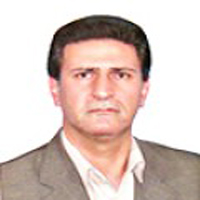A Survey of Transit Road in Development of Yazd Conurbation
Author(s):
Abstract:
Introduction
For few decades، the population of cities in developing countries، including Iran had a higher growth rate than the total growth rate of the population in other countaries. Iranin cities are typically characterized by extensive urban sprawl، manifesting low density development which makes it extremely challenging for city planners to put in place the public transit systems that are necessary to ensure the efficient operation of urban areas. These challenges، coupled with ongoing population and economic growth، require immediate attention. This paper explores one potential solution from the perspective of real estate and transit road in Yazd Conurbation. The focus is on how to achieve the role of transit road in development of Yazd conurbation. Automobile dependence، expressed through comparative levels of car ownership and use and transit service and use، varies widely and systematically across a large sample of international cities. Yazd province cities exhibit the most extreme dependence on the automobile، followed by Ardakan، Meybod and Mehriz cities، with Isfahan and Kerman cities having very much more transit-oriented cities with greater levels of transit. Methodology
For mapping، measuring، and modeling the role of transit in growth of conurbation of Yazd، various data on traffic، urban growh priodes and demography of study were collected. Results And Discussion
The study has also prioritized the order of factors influencing site selection of military centers and then weighted site selection was performed. Rating Factors The overall rating for each factor has been obtained by multiplying the response of each rating in table valuation factors considering their coefficients (Table 1). The sum has been calculated and by dividing the total points by the total number of questionnaires (120) the final score has been revealed for each factor. Points are calculated for effective factors in site selection procedures are given in table (2). Table 2. compared nine quantitatively Thomas L. Saati to compare binaries Extremely important Definition 1 Definition 2 Equally important 3 Equal to average important 4 Important Middle 5 Moderate to strong important 6 Strong important 7 Strong to very strong important 8 Important very strong 9 Important very strong to immensely strong Malchfsky، 1998 The final site selection Maps and base imagery have been collected and geo-referenced، sectioned in time scale and the layers required to form a thematic map have been prepared in vector format. Then all layers for comparison and involvement in decision making have been plugged in Raster Calculator from Spatial Analyst Tool. This give a raster of suitability for the area. The raster have been reclassified in three classes including Good (dark color)، Middle (half-tone) and Unsuitable (bright colors). Conclusion
According to the zoning performed by the AHP method it can be said that suitable areas in the northern half of the study area are more than the southern that is encompassed large parts of Tabriz، Osco and Shabestar. Also lower parts of Bonab، Malekan، Azarshahr and Ajabshir from the conditions are suitable. Maragheh Region and lower parts from Azarshahr، Osco and Bonab are qualified in average in the site selection. Therefore، it can be said that Tabriz and Ajabshir according to site selection in relation to geomorphological factors and other natural and human factors are favorable.Keywords:
Yazd , Conurbation , Urban , System , Transit
Language:
Persian
Published:
Human Geography Research Quarterly, Volume:45 Issue: 85, 2013
Pages:
229 to 248
https://www.magiran.com/p1174606
سامانه نویسندگان
مقالات دیگری از این نویسنده (گان)
-
Analysis of the consequences of climate change on the characteristics of middle Zagros snow cover using remote sensing data
Moslem Seydi Shahivandi, Kamal Omidvar*, Gholamali Mozafari, Ahmad Mazidi
Journal of Applied Researches in Geographical Sciences, -
Identifying the most important synoptic patterns that cause dust in Yazd province and north of Kerman
Mahbobeh Amiri *, Kamal Omidvar, Gholamali Mozafari, Ahmad Mazidi
Journal of Climate Research,



